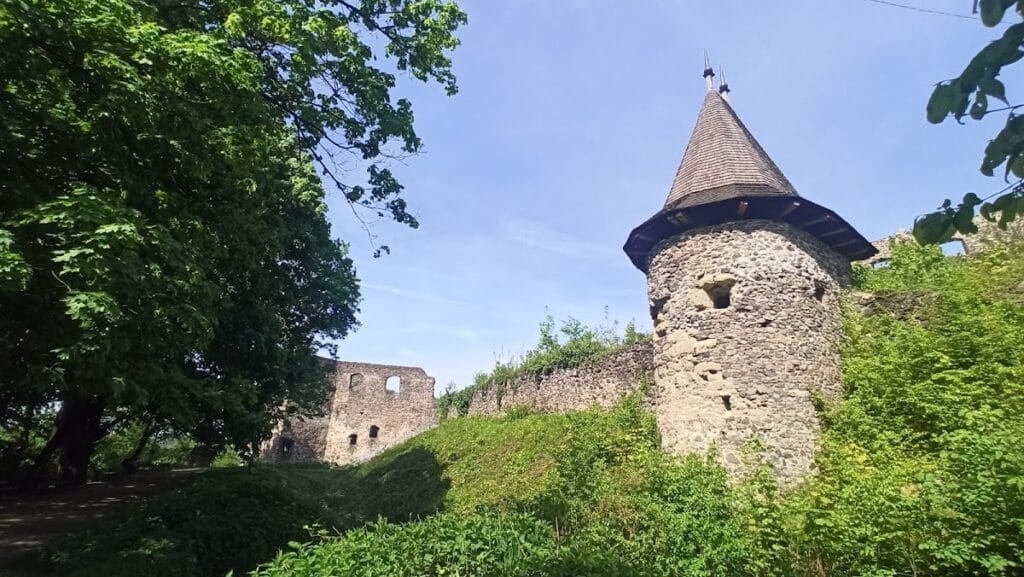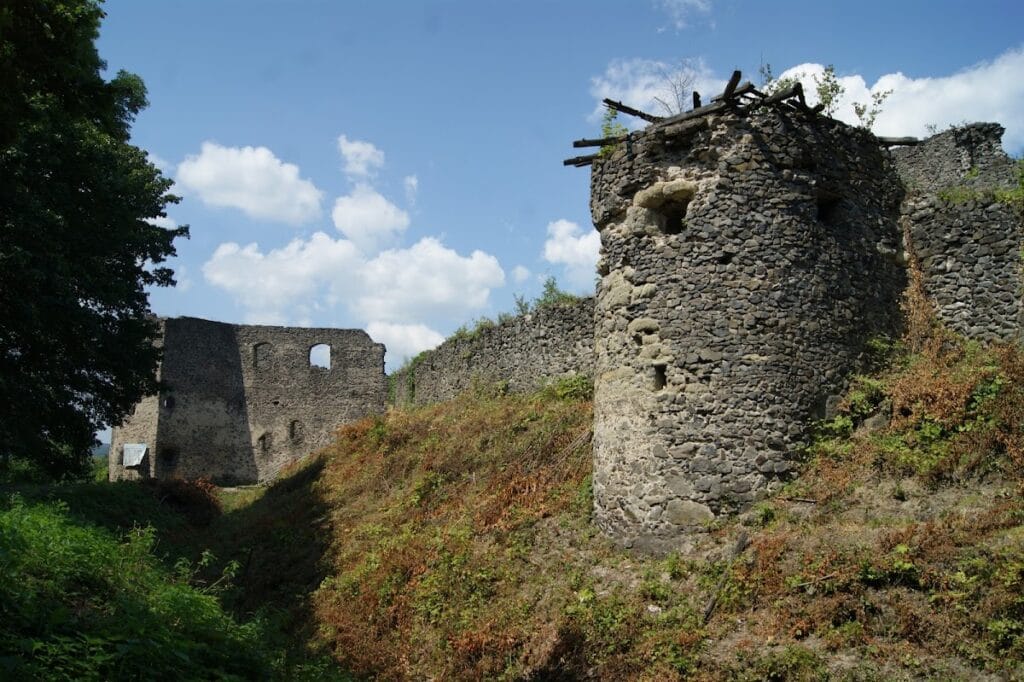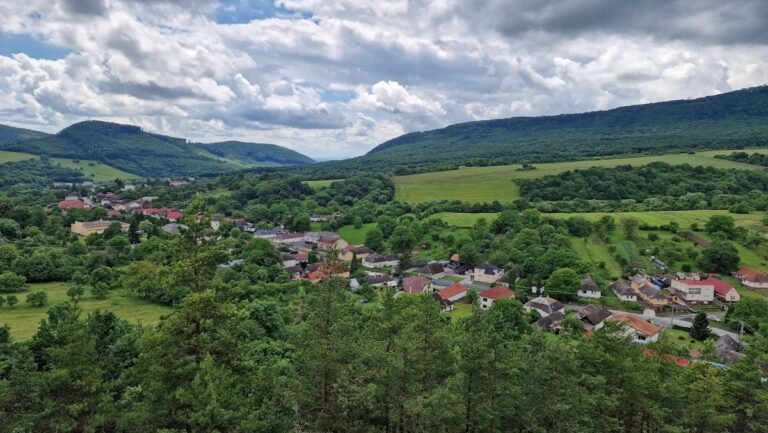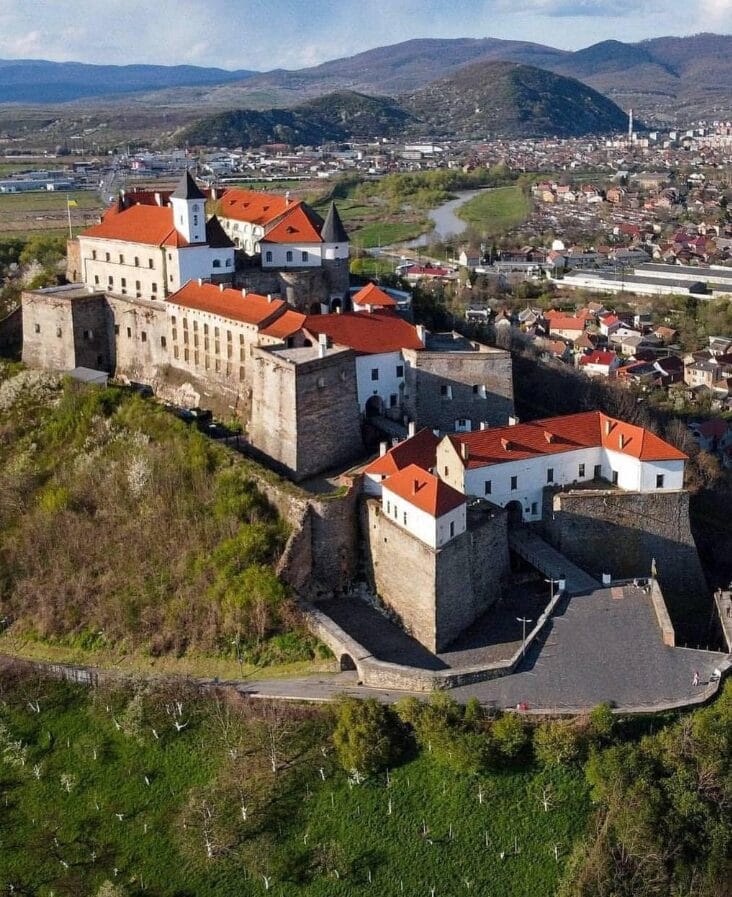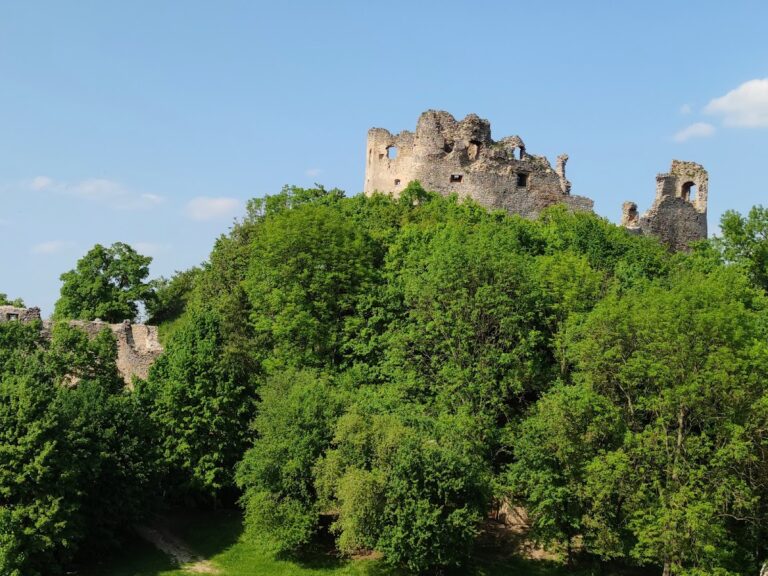Nevytsky Castle: A Medieval Fortress in Ukraine
Visitor Information
Google Rating: 4.6
Popularity: Medium
Country: Ukraine
Civilization: Medieval European
Site type: Military
Remains: Castle
History
Nevytsky Castle stands near the village of Kamianytsia in the municipality of Nevyts’ke, Ukraine. It was originally built by medieval Hungarian rulers as part of a network of defenses controlling important mountain passes through the Carpathians.
The earliest origins of the site date back to roughly the 12th century when a small wooden fortification guarded key trade routes leading from the Carpathians toward the regions of Halych and Kyiv. This wooden structure was destroyed during the Mongol-Tatar invasions of 1241 but was reconstructed in stone towards the late 13th century. In 1279, King Ladislaus IV of Hungary granted ownership of the castle and surrounding lands to Finti, a voivode of the Obo family. After Finti’s death, his brother Omodei maintained control until 1311. During this time, the fortress was strengthened, including the replacement of an earlier round tower with a new square four-sided donjon (main tower).
In the early 14th century, Nevytsky Castle became a contested site amid Hungarian civil wars, shifting occupants between royal forces and local magnates. In 1328, King Charles Robert of Anjou granted the fortress to the Drugeth family, who would own it for over three centuries. The Drugeths undertook major rebuilding in the 15th century to adapt to the growing use of firearms. This period saw the addition of lower outer walls designed to resist cannon fire and a three-story southern tower linked to the central courtyard by a covered gallery. Between the castle’s second and third defensive lines, a small settlement arose, housing craftsmen who supported the fortress and its occupants.
The late 16th and early 17th centuries were marked by frequent changes in ownership due to family disputes and military conflicts. In 1644, during a period of religious wars, the Transylvanian prince George I Rákóczi seized the castle and ordered its destruction. Following this event, the fortress was abandoned and gradually fell into ruin. By the late 19th century, the area near the castle saw the creation of a park named after botanist Karl Wagner, featuring a fountain supplied by natural water pressure. More recently, from 2019 to 2021, archaeological excavations and partial restorations were carried out, stabilizing the ruins and reconstructing the donjon tower that had lost its roof during a storm in 2019.
Remains
Nevytsky Castle is positioned atop a volcanic rock cliff rising about 120 meters above the nearby Uzh River, with the site’s highest point reaching around 260 meters above sea level. The fortress is centered around an oval-shaped courtyard enclosed by two-story brick buildings. One prominent remaining feature is the four-story square donjon tower situated on the southeastern side, standing above adjoining structures. This tower served as the main stronghold within the complex.
The castle’s defenses were arranged in three distinct lines. The innermost included a stone wall reinforced by four towers dating from the late 14th to early 15th centuries. Three of these are semi-oval in shape while one features a triangular plan, all providing a robust shield to the central courtyard. Surrounding this was a middle fortified wall accompanied by a moat, which further delayed attackers. The outermost defensive line consisted of earthworks combined with wooden and clay constructions, featuring two semi-circular bastions that enclose the castle’s grounds in a trapezoidal layout. These outer walls were purposefully built lower, a design adaptation to reduce vulnerability against firearms.
On the northwest side, the main entrance was marked by a hexagonal gate tower oriented outwards. Access to this gate was protected by two parallel defensive walls while a drawbridge once spanned the moat in front of the gate. Within the courtyard, there is a large well approximately 3.5 to 4.5 meters deep and matching in diameter, which collected rainwater and provided a crucial water source for the inhabitants. At the southern edge of the castle, a projecting three-story tower stands connected to the central area through a 35-meter covered gallery that had two floors and openings (embrasures) allowing defenders to control movement. This gallery linked to a wooden bridge over the moat granting access to an inner courtyard.
Archaeological layers from the 15th century revealed large stone cannonballs, some reaching up to 25 centimeters across, indicating the castle’s adaptation to early artillery warfare. Today, Nevytsky Castle remains in a state described as semi-ruined but with partial conservation efforts. Some of the surviving towers have been fitted with provisional tented roofs to protect their upper sections. Recent restoration work has helped stabilize the donjon tower and cleared the surrounding area, allowing the site’s complex layout and defensive features to be more clearly understood.

